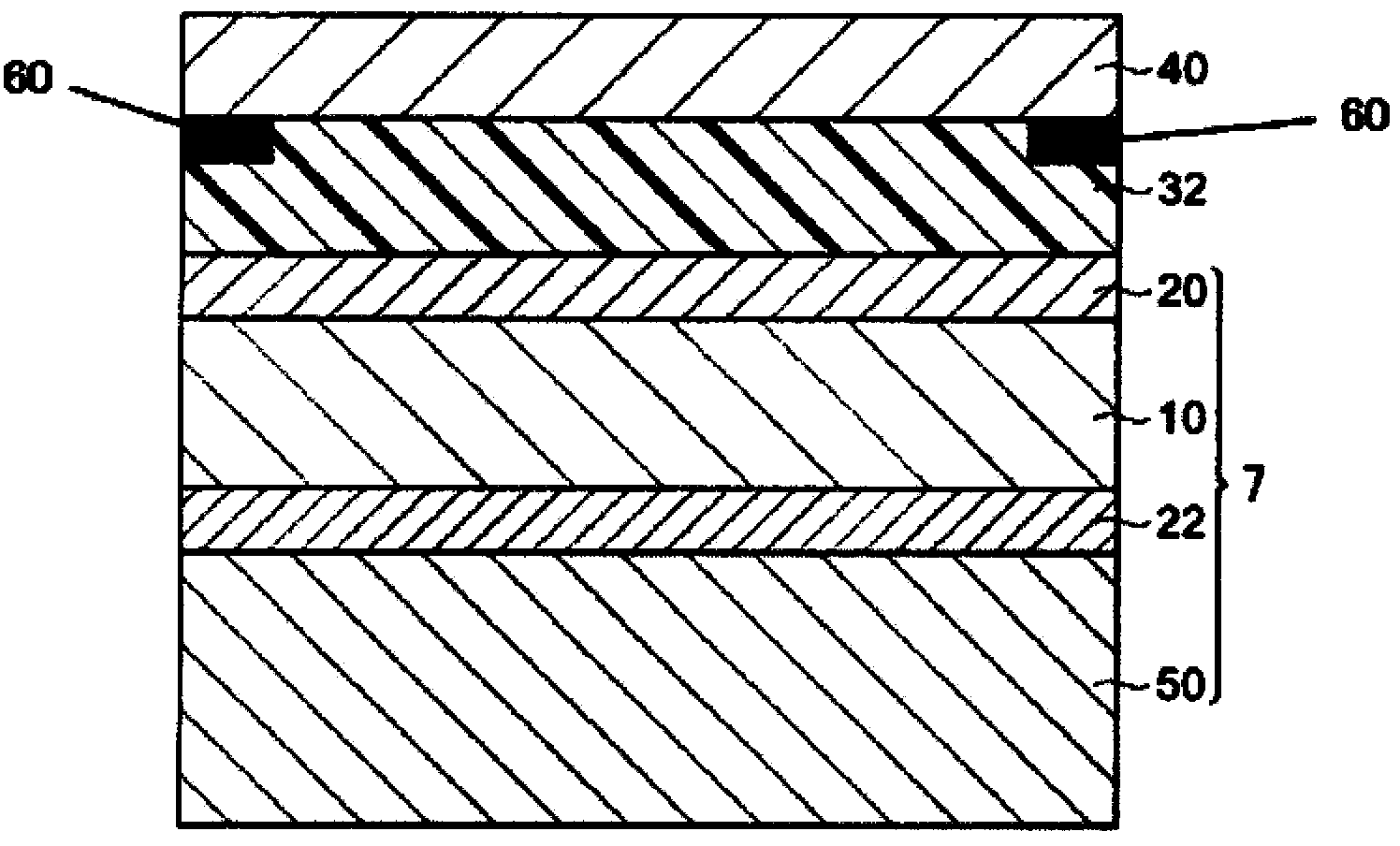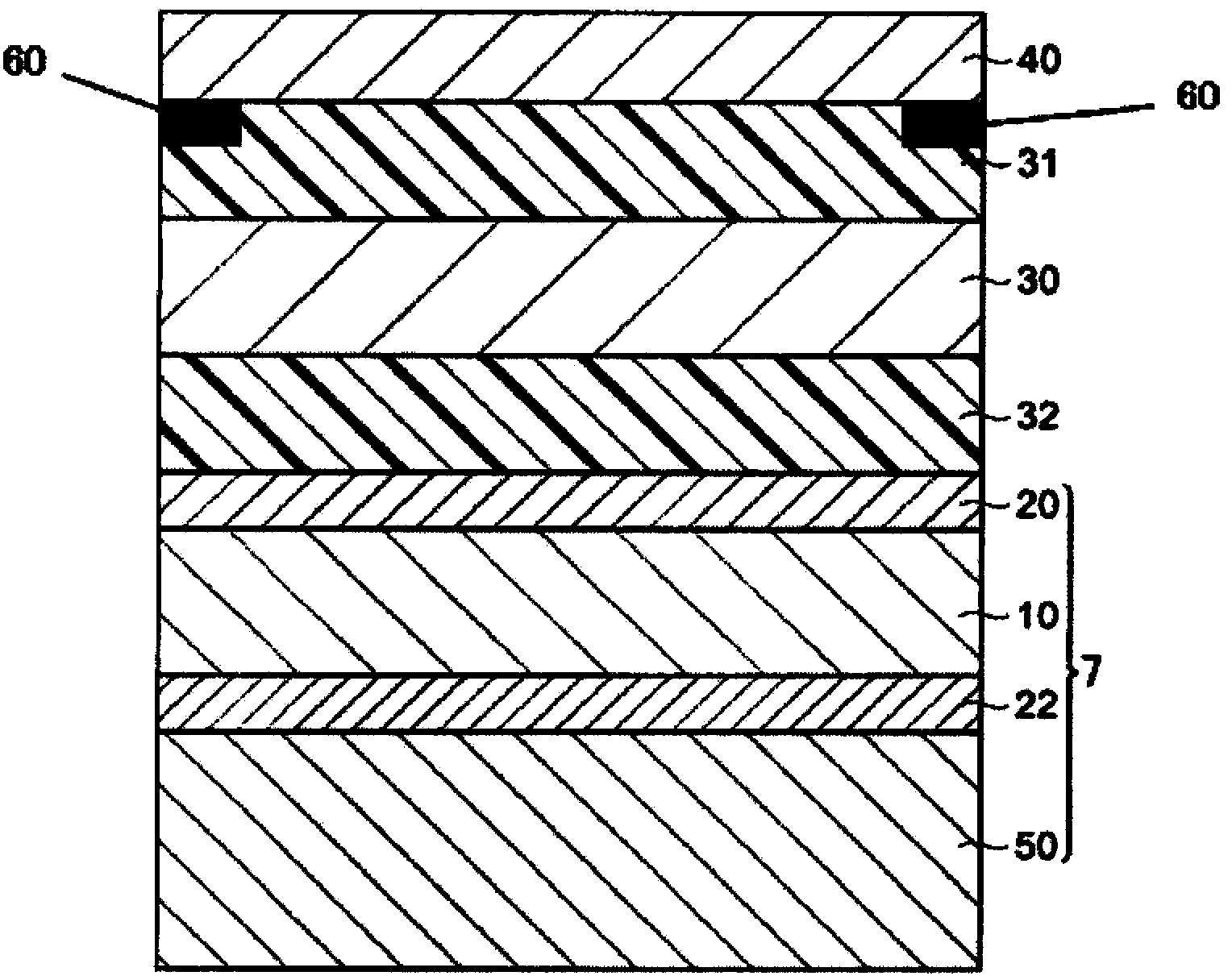Adhesive sheet for image display device, image display device, and adhesive resin composition
An image display device, adhesive resin technology, applied in the direction of adhesive types, ester copolymer adhesives, polyurea/polyurethane adhesives, etc. Achieve high adhesion, excellent impact resistance, excellent impact resistance and visibility
- Summary
- Abstract
- Description
- Claims
- Application Information
AI Technical Summary
Problems solved by technology
Method used
Image
Examples
Embodiment
[0151] The following examples illustrate the present invention. It should be noted that the present invention is not limited to these examples.
[0152]
[0153] Each adhesive sheet obtained in each Example and Comparative Example was evaluated by the following test method.
[0154] 1. Determination of glass transition temperature, storage elastic modulus and loss elastic modulus
[0155] Measured according to the method described in the instructions.
[0156] 2. Determination of Adhesion
[0157] The produced adhesive sheet was cut out to a size of 10 mm in width and 50 mm in length, and the adhesive force at 180-degree peeling was measured using a tensile tester ("RTC-1210" manufactured by Orientec Corporation). The adhesive force to the glass substrate and the acrylic resin substrate was measured under the conditions of peeling at a peeling speed of 300 mm / min for 3 seconds and measuring temperatures of 25°C and 80°C.
[0158] 3. Appearance evaluation
[0159] Cut th...
manufacture example 1
[0183] Production Example 1: (A) Synthesis of Acrylic Derivative Polymer A-1
[0184] In a reaction vessel with a cooling tube, a thermometer, a stirring device, a dropping funnel, and a nitrogen gas injection tube, take 84.0 g of 2-ethylhexyl acrylate, 36.0 g of 2-hydroxyethyl acrylate, and methyl 150.0 g of ethyl ketone was heated from normal temperature (25° C.) to 70° C. over 15 minutes while replacing nitrogen gas at an air volume of 100 mL / min.
[0185] Thereafter, while maintaining the temperature at 70° C., 21.0 g of 2-ethylhexyl acrylate and 9.0 g of 2-hydroxyethyl acrylate were used as additional monomers, and 1.0 g of lauroyl peroxide was dissolved therein to prepare a solution. This solution was added dropwise over 60 minutes, and after completion of the dropwise addition, the reaction was further performed for 2 hours.
[0186] Next, methyl ethyl ketone was distilled off to obtain a copolymer resin (weight average molecular weight: 150,000) of 2-ethylhexyl acryla...
manufacture example 2
[0194] Production Example 2: (A) Synthesis of Acrylic Derivative Polymer A-2
[0195] Acrylic derivative polymer A-2 was synthesized as an acryloylmorpholine (ACMO)-containing polymer.
[0196]Specifically, in the above-mentioned Production Example 1, 74.5 g of 2-ethylhexyl acrylate, 31.9 g of 2-hydroxyethyl acrylate, 13.6 g of acryloylmorpholine (ACMO) and methyl ethyl acrylate were used as initial monomers. 150.0 g of ketone, 18.6 g of 2-ethylhexyl acrylate, 8.0 g of 2-hydroxyethyl acrylate, and 3.4 g of acryloyl morpholine (ACMO) were used as additional monomers, and 1.0 g of lauroyl peroxide was dissolved in it, except Except for using the solution obtained in this way, a copolymer resin (weight average molecular weight: 180,000) (acrylic acid-based Derivative polymer A-2).
PUM
| Property | Measurement | Unit |
|---|---|---|
| glass transition temperature | aaaaa | aaaaa |
| thickness | aaaaa | aaaaa |
| thickness | aaaaa | aaaaa |
Abstract
Description
Claims
Application Information
 Login to View More
Login to View More - R&D
- Intellectual Property
- Life Sciences
- Materials
- Tech Scout
- Unparalleled Data Quality
- Higher Quality Content
- 60% Fewer Hallucinations
Browse by: Latest US Patents, China's latest patents, Technical Efficacy Thesaurus, Application Domain, Technology Topic, Popular Technical Reports.
© 2025 PatSnap. All rights reserved.Legal|Privacy policy|Modern Slavery Act Transparency Statement|Sitemap|About US| Contact US: help@patsnap.com



